
Issue #71: Friday 9 August, 2024
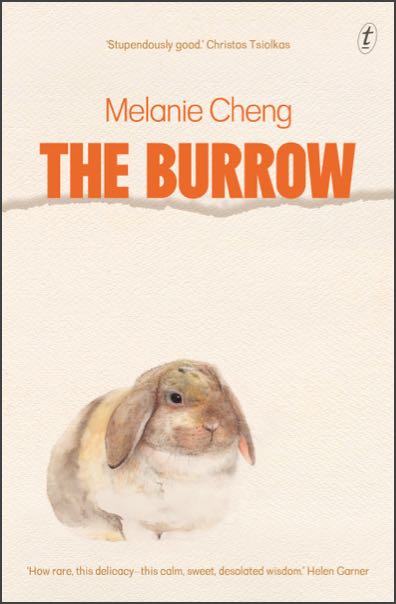
This is the second novel by Melanie Cheng, an Australian-born writer who grew up mostly in Hong Kong and is now a resident of Adelaide. Her collection of short stories, Australia Day, won the Victorian Premier’s Literary Award in 2018.
Perhaps in keeping with the timid creature depicted on the cover (designed by W. H. Chong and featuring a beautiful watercolour by Phil Day), this is on the surface a very quiet, understated book; but of course there is a lot going on beneath that surface, down in the burrow.
Set in the suburbs of Melbourne while the city was still under the travel restrictions and curfew imposed by the State Government to try to manage the COVID pandemic, the story focuses on one particular family, who are still struggling in the aftermath of a devastating tragedy a few years earlier.
The book opens with the acquisition by the family of a floppy-eared baby rabbit as a pet. The family comprises the father Jin, a hospital doctor; his wife Amy, an aspiring writer; and their 11-year-old daughter Lucie. There’s also Pauline, Amy’s mother and Lucie’s grandmother, who after breaking her wrist in a fall, needs to stay with them for a while shortly after the novel begins.
Each chapter is told from the point of view of one of these characters—we even get a couple of short snippets from the rabbit’s point of view—providing us with deep insights into the strained relationships in the family and how they are dealing with the tragic death of a young child.
That tragedy was the death by drowning of Lucie’s baby sister Ruby. It takes a long while for the full details of this accident to be uncovered for us, but it’s quickly clear that it involved Pauline in some way, and though it turns out that she can’t be blamed for what happened she nevertheless heavily blames herself.
So guilt, remorse and suppressed anger vibrate like taut wires between all of the adults in the novel; and however much the grownups try to conceal these tensions from her, they are not unobserved and thought about by young Lucie.
There are other sources of tension: Amy’s frustrated need for quiet and isolation in order to write; Pauline’s anger about the serial infidelity of Amy’s father during their marriage; Jin’s heavy workload and his bitterly-regretted secret affair with a work-colleague.
Towards the end of the book, these buried secrets and resentments finally come to light, and are put into words which shake up the characters’ relationships as never before.
Through all of this runs the presence of the little rabbit, symbolising the fragility of life while also representing a focus for love and care. When it falls ill, every one of the family is, for a time, united in concern.
The epigraph of the book from Franz Kafka is perfectly chosen, and sums up the theme very well:
The most beautiful thing about my burrow is the stillness. Of course, that is deceptive. At any moment it may be shattered and then all will be over.
Definitely recommended.
Note: my thanks to Text Publishing for making this advanced review copy available to read through NetGalley. The Burrow will be published on 1 October 2024.
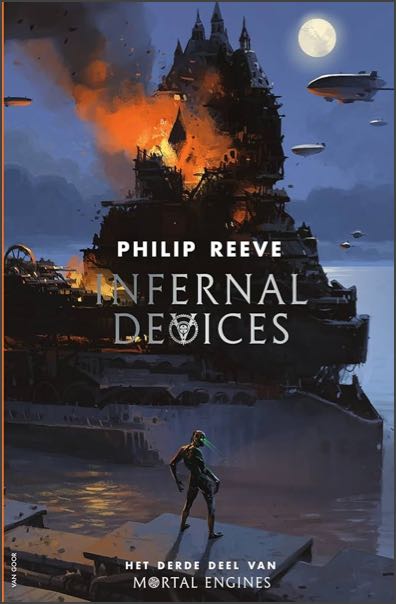
This is the third book in the Mortal Engines series, which I’m re-reading my way through at the moment. All of these books are aimed at “middle-school” readers, which I take to be kids in their early to mid teens.
A couple of quick observations: firstly, it’s 15 years since I last read this, and I found that I remembered almost none of the story, which is interesting in that I remembered most of the first two books in the series. And secondly, the tone of this one turns decidedly darker and quite a bit more violent than the earlier books. If you’re giving it to your teenager, take note.
The main action of Infernal Devices opens sixteen years after the close of the previous book, Predator’s Gold. At the end of that one, Tom Natsworthy and Hester Shaw had settled down in the now-stationary traction-city of Anchorage, looking forward to a peaceful life there. We were also told that Hester was pregnant. Now, time has passed and their daughter Wren is just about to turn 16 years old. Like many a teenager, she is unsatisfied with her quiet life and envies the adventures which her parents had. She’s also frequently at odds with her mother Hester, and is embarrassed by her mother’s ugly, scarred face (slashed with a sword in the first book).
Her boredom doesn’t last long, however, as through a series of rash decisions she finds herself kidnapped aboard a submarine raider from the sunken city of Grimsby. Tom and Hester and some friends set off in desperate pursuit.
In another thread, we learn of the resurrection of the Stalker Shrike, a half-machine, half-dead-human designed to be a killing machine. Shrike had apparently been killed, or at least deactivated, by Tom in the first book of the series. Now he has been repaired and established as a guard for the leader of the Green Storm anti-tractionists, the Stalker Anna Fang. But far buried in what remains of his mind is his fond memory of a girl with a scarred face, Hester Shaw.
Young Wren doesn’t end up in underwater Grimsby, however, but instead finds herself a slave on the sea-borne resort city of Brighton, powered by huge traction paddle-wheels. The Moon Festival is about to begin, with fireworks and city-wide celebrations. But the Green Storm raiders are on their way…
I said that this book takes a darker tone, and it does, mostly through the character arc of Hester Shaw. Estranged from her own daughter, she becomes increasingly embittered, and starts to take a joy in violence. I lost track of how many people she kills in this story. This turn to the darker side strains her relationship with Tom to the breaking point.
Unlike the first two books in the series, which can be read as stand-alone novels, this one ends on a downbeat and with a number of cliff-hangers to be resolved in the final book, A Darkling Plain, which I’ll be picking up to read in the next couple of months.
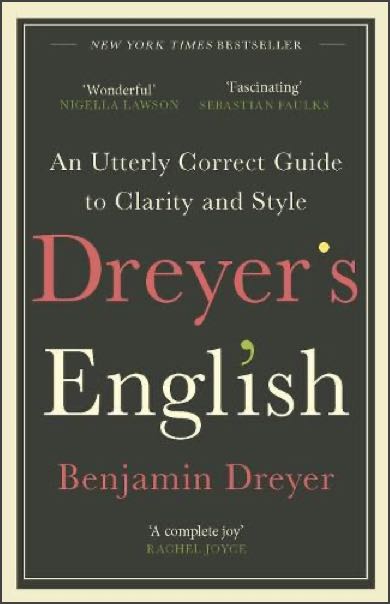
Subtitled: “An Utterly Correct Guide to Clarity and Style”.
This is not normally the kind of book you would read from cover to cover, as it’s more of a reference book that you would consult when required than anything else. But Dreyer has such an engaging, amusing style that I found myself doing just that, reading it from cover to cover.
Dreyer has spend most of his life as a copy editor, working for Random House (now part of Penguin), and so he talks about good writing from a very practical rather than theoretical point of view, and has many interesting and frequently funny anecdotes of his dealings with authors.
Throughout, there’s a very light approach, not didactic, but still firm about things he considers important. He had me hooked when in an early chapter he talks about the Grammar Police pulling you over to the kerb over some textual transgression.
This is the UK edition of the book, and there’s an introductory chapter about the differences between UK and USA usage.
He starts the body of the book talking about rules and non-rules: the things we’re often taught about what to do when writing which in fact are incorrect or at least downright misleading, for example “Never start a sentence with ‘And’ or ‘But’” or “Never split an infinitive”. Then we have an extensive chapter about punctuation.
There are separate chapters about frequently misspelled words (I’m pleased to say that I get very few of these wrong myself); about easily confusable words; dealing with proper nouns; and so on.
This little bit is a good example of his approach:
At some point in your life, perhaps now, it may occur to you that the phrase ‘aren’t I’ is a grammatical trainwreck. You can, at that point, either spend the rest of your life saying ‘am I not?’ or ‘amn’t I?’ or embrace yet another of those oddball constructions that sneak into the English language and achieve widespread acceptance, all the while giggling to themselves at having got away with something.
Don’t miss the footnotes, by the way, they are often some of the most amusing parts of the book.
If you write for a living, or as a hobby, or for pleasure, or just to communicate well in an email, and you want to develop both a good style and a correct usage; this book is an invaluable resource. And a very enjoyable read as well.
This is a digression, but one thing which greatly endears me to Dreyer is that he’s a big fan of the writing of Shirley Jackson, whose work he uses quite often in this book to give examples. She is one of my own favourite writers, and he says of her:
Jackson is not only one of my muses, but, I must insist, one of the great (and woefully underappreciated) prose stylists of the twentieth century.
And he has the receipts to prove it. He spent an entire Substack post deconstructing and analysing the astonishing first paragraph of Jackson’s The Haunting of Hill House, which if you haven’t read, you must.
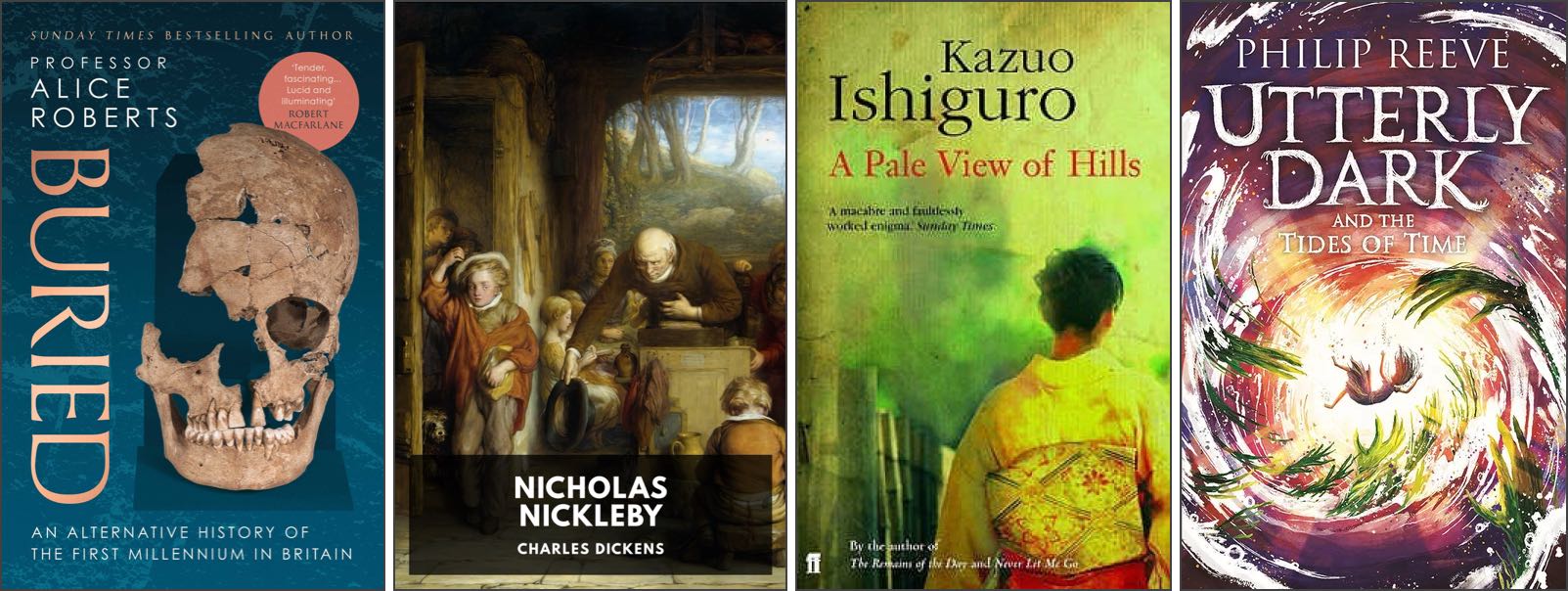
How can I be reading four books at once? you ask. It’s really not so hard when they are all different kinds of books, read in different formats.
I’m debating about continuing to listen to audiobooks, though, as it’s taking me so long to get through any particular one of them. Unless I get back into a situation when I can listen for an extended period (such as travelling by public transport, or driving to somewhere distant) I may drop the idea, and on my daily walk just listen to podcasts, as I used to do.
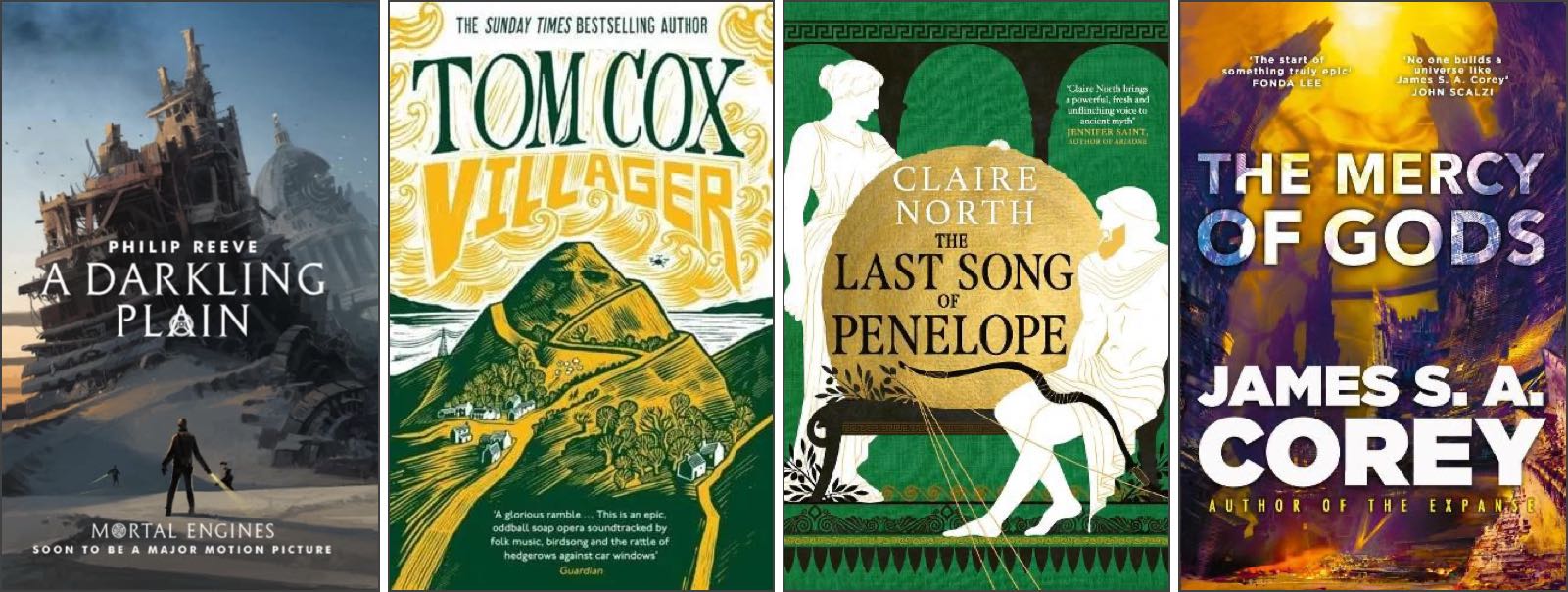
Going through some of my old fanzines recently, I realised just how many substantial reviews I published in them before I started producing Through the Biblioscope. So it occurred to me that I could feature one such review from the past in each issue here, to help fill out the collection of my reviews and include them in my indexes.
Obviously, the books I write about in this section are never going to be the latest releases, but I hope that you will nevertheless find them of interest. Anyway, here we go, with what still remains one of my very favourite books of all time.
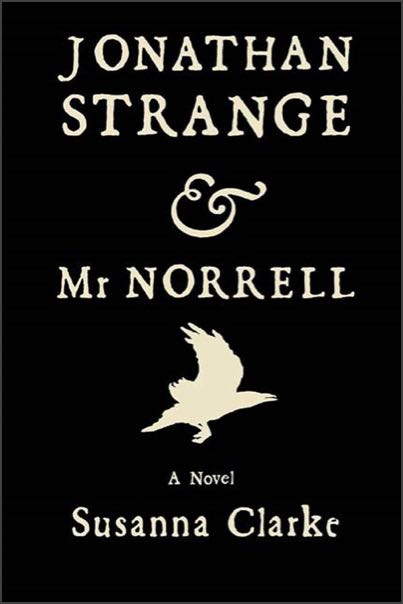
(review written June 2020)
This is a massive slab of a book, some 782 pages in hardback, more than 320,000 words. Yet I’ve read it more than once and would love to find time to go back and read it again. It’s simply the best novel of fantasy ever written, as far as I’m concerned. It deservedly won the 2005 Hugo Award for Best Novel. And yet it was a debut novel for its author, Susanna Clarke—the book just seemed to come out of nowhere. It apparently took her ten years to write.
It’s set in an alternative England at the time of the Napoleonic Wars. The book opens in the year 1806. Most of the history of England seems to be the same as in our timeline: the country is at war with France, the Prince Regent is the ruler with his father George III deep into madness. But right from the start we know something is different. It begins:
Some years ago there was in the city of York a society of magicians. They met upon the third Wednesday of every month and read each other long, dull papers upon the history of English magic.
They were gentleman-magicians, which is to say they had never harmed any one by magic—nor ever done any one the slightest good. In fact, to own the truth, not one of these magicians had ever cast the smallest spell, nor by magic caused one leaf to tremble upon a tree, made one mote of dust to alter its course or changed a single hair upon any one’s head. But, with this one minor reservation, they enjoyed a reputation as some of the wisest and most magical gentlemen in Yorkshire.
But at one of these meetings, a new member, a gentleman called John Segundus, poses an awkward question: why is no more magic done in England? The other men present ridicule him:
“You would not, I imagine, suggest that it is the task of botanists to devise more flowers? Or that astronomers should labour to rearrange the stars? Magicians, Mr Segundus, study magic which was done long ago. Why should any one expect more?”
But outside the meeting, along with a sympathiser Mr. Honeyfoot, Segundus persists and tracks down someone who has been buying up ancient books discussing magic. This turns out to be a reclusive individual, Gilbert Norrell, who they discover owns a vast library of rare magic books, which he shows them, and what’s more, professes to be able to perform magic. And indeed, when challenged by the Society, puts on an astonishing demonstration inside York Minster (the cathedral).
We begin to pick up on the history of magic in England. We learn that many centuries ago, the north of England was ruled by someone called The Raven King, John Uskglass, a powerful magician who “was traditionally held to have possessed three kingdoms: one in England, one in Faerie and one, a strange country on the far side of Hell.”
A little later we come across Jonathan Strange, a gentleman’s son who is looking for a profession. He’s diverted from the traditional routes of the Army or the Clergy by being accosted by a strange individual called Vinculus who tells him a prophesy that he is born to be a magician. Intrigued, he begins to study up the subject as best he can, but knows nothing of Mr. Norrell until he encounters Segundus and Honeyfoot. Much later, he becomes Norell’s pupil for a period before mutual jealousy turns into bitter rivalry.
But that’s getting ahead of the story. Norrell moves to London at the urging of his pragmatic and ambitious servant Childermass, to try to put his magical knowledge to use in the current war with Napoleon, which isn’t going well. He’s initially scorned and has no success until he is put in a position to help the cabinet minister Sir Walter Pole, whose fiancé is dying. Her death will deprive Pole of her fortune, on which he had been depending. Indeed she does die, but Norrell is able to bring her back using magic. To do so, however, he must enter into a pact with a powerful fairy, whose true name we never learn, but who is throughout called simply “the gentleman with the thistledown hair”. These fairies, you must understand, are most emphatically not the pretty ones with butterfly wings. Instead, they are mostly inimical to humans and have evil intent. That, we discover, is certainly true of the gentleman with the thistledown hair.
It’s impossible to summarise this huge book, but what appeals to me is its utter richness and depth. It’s full of detailed footnotes spelling out the invented legends and history of human encounters with the faery world, every one of which footnotes you should read. There’s so much such detail that the reader starts to believe this is true knowledge, a true history of England, just seen behind a veil. It’s an astonishing creative feat, on a par with the creation in Possession by A. S. Byatt of reams of unique poetry in two completely different styles.
As well as a page-turning plot, it’s beautifully written and full of great characters; not just Norrell and Strange, but Lady Pole, whose resurrection does not go well; Strange’s wife Arabella, who comes to harm; Norrell’s servant Childermass; the street magician Vinculus; Stephen Black, the negro servant of Sir Walter; and many more. Not to mention the gentleman with the thistledown hair and John Uskglass, the Raven King himself.
I can’t praise this book highly enough. If you asked me what is my favourite book of all time, in any genre, at present it would be this one. Even though I dislike almost all fantasy!
Comment on Issue 70
26 July 2024
Mark Nelson
---
It’s a long while ago now, but I have read War and Peace, Anna Karenina, and even his Resurrection, though I remember almost nothing (OK, really nothing) of the latter. I doubt that I will have time left in my life to go back and re-read any of them.
I imagine the Russians still regard Tolstoy highly, as being on the side of the peasants rather than of the aristocracy. But I don’t know.
—David
If you’d like to make a modest contribution to my efforts in this newsletter, I’d love it if you would buy me a coffee.
Want to comment? Please send an email to:

© Copyright 2024 by David R. Grigg
and licensed under Creative Commons License CC BY-ND 4.0.
I’ve not done any reading since just before the 11th July as I’ve had a viral infection which is finally in its dying days. It would have been great to have two weeks off work, think of all the reading I could have done. Except that when you’re off work ill, you don’t feel up to reading.
I’ve never read Tolstoy and I don’t suppose I ever will. I have seen several film versions of Anna Karenina, that’s likely the nearest I’ll ever get to him. What the Soviet view of his work? It must have been favourable if they’d allowed a museum to him on his ancestral estate. (Is the museum part of the story also true?) I hadn’t realised that he died as `recently’ as 1910.
The only `classic’ Russian author that I’ve read is Ivan Turgenev. My mum heard Denis Healey, an important figure in the post-WW2 British Labour Party and a MP from 1952 to 1992, saying that it was a big fan of the short stories of Ivan Turgenev (1818-1883). Accordingly, I received a collection of his short stories as a birthday present. I didn’t enjoy them, but perhaps thirty years later it’s time to give them another go?
I am eagerly looking forward to your review of Buried. I’ve always been interested in archaeology and at one time that’s what I wanted to study at university. My parents dissuaded me of that idea, but I was able to take a year-long course in archaeology as an undergraduate.
I mentioned that one of the three missing books from my Booktopia order was Leigh’s book. Another one was Traditions of Death and Burial by Helen Frisby which received a very favourable review in the Times Higher Education, back in the days when it still reviewed books.
Not the review I read:
https://tsbookshop.com.au/p/grief-traditions-of-death-and-burial